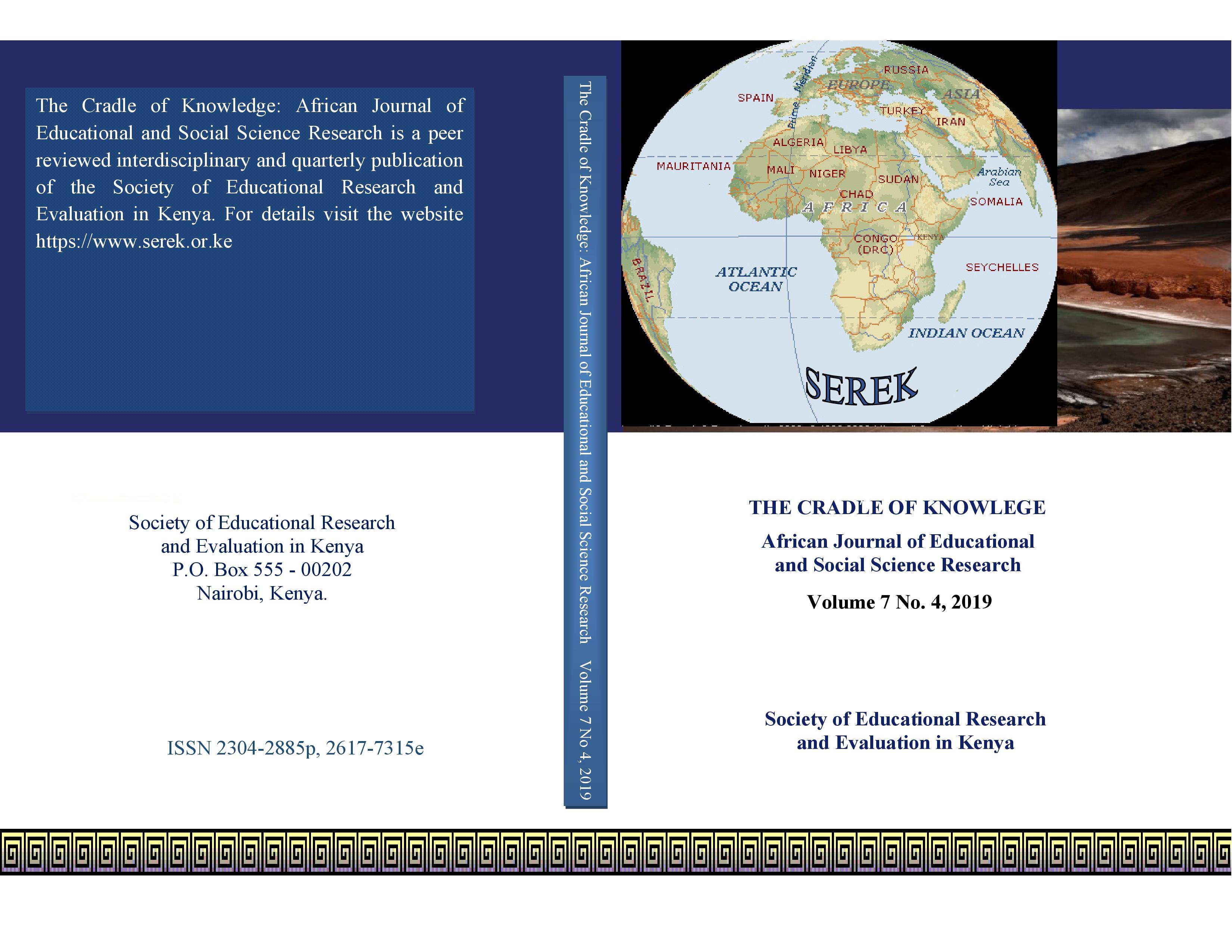
Harnessing Social Capital for School Development: Community Participation in School Construction Projects
Abstract
The study examined how communities participate in school construction projects in primary schools in Somaliland and how community participation in school construction projects influences the performance of those projects. The study used a correlational design and was undertaken as a cross-sectional survey. The target population was 920 primary school headteachers in all the 13 regions of Somaliland and 82 District Education Officers. A sample of 257 headteachers was drawn using multistage sampling where purposive sampling and stratified random sampling with replacement were used to sample headteachers while 22 DEOs were sampled using simple random sampling. Data was collected from headteachers using questionnaires and from DEOs using semi-structured interviews. The questionnaire was pilot tested on 28 headteachers. The response was received from 247 headteachers and 20 DEOs. Variables relationships were analyzed using path analysis and tested using t-tests at α = 5%. The main methods used to involve the community in primary schools’ construction projects were: involving them in decision-making processes, volunteering labour and fundraising. The study found that community participation had no significant influence on the performance of construction projects. Community participation in public primary schools in post-war Somaliland is a policy-driven initiative and a fill-gap measure of deficiencies left by the government’s low and inadequate capitation to schools. Low social capital in the communities participated in projects coupled with the costs and the downsides of the community participation process can result in a negative impact on the performance of those projects. Urban schools tend to benefit more from community participation than rural schools due to higher social capital stocks in urban communities as compared to rural communities.
Keywords: Community Participation, Performance, Construction Projects, Social Capital, School Development, School Projects.Full Text:
PDFReferences
Atkinson, R. (1999). Project management: Cost, time and quality, two best guesses and a phenomenon, it’s time to accept other success criteria. International Journal of Project Management, 17(6), 337-342.
Chan, A. P. C., & Chan, A. P. L. (2004). Key performance indicators for measuring construction success. Benchmarking: An International Journal, 11 (2), 2003-221.
Daly, A. J. (2010). Mapping the terrain: Social network theory and educational change. In Daly, A. J. (Ed.), Social Network Theory and Educational Change (pp. 1-16). Cambridge: Harvard Education Press.
Foster, G. M. (2012). Community development and primary health care: Their conceptual similarities, in stone cultural crossroad of community participation in development, human organization. Journal of the Society for Applied Anthropology, 48(3), 206-212.
Freeman, M. & Beale, P. (1992). Measuring project success. Project Management Journal, 23(1), 8-17.
Hillery, G. A. (1955). Definitions of community: Areas of agreement. Rural Sociology, 20, 111-123.
http://www.iisi.de/fileadmin/IISI/upload/2009/p51.pdf.
Jiang, H., & Carroll, J. M. (2009, June 25-27). Social capital, social network and identity bonds: A reconceptualization. Paper presented in the 2009 Community and Technology conference, University Park, Pennsylvania, USA. Retrieved from
Lim, K. C., & Mohammed, A. Z., (1999). Criteria of project success: An exploration re-examination. International journal of project management, 17(4), 243-8.
Ministry of Education and Higher Education. (2012). Somaliland’s Education sector strategic plan 2012-2016. Hargeisa, Somaliland: Author.
Ministry of Education and Higher Studies. (2017). Education sector strategic plan 2017-2021. Hargeisa, Somaliland: Author.
Putnam, R. D. (1993). Making democracy work: Civic traditions in modern Italy. New Jersey, USA: Princeton University Press.
Sadeh, A., Dvir, D., & Shenhar, A. (2000). The role of contract type in success of R & D defense projects under increasing uncertainty. Project Management Journal, 31(3), 14-21.
Shenhar, A.J., Levy, O., & Dvir, D. (1997). Mapping the dimensions of project success, Project Management Journal, 8(2), 5-13.
Shenhar, A.J., Tishler, A., Dvir, D., Lipovetsky, S., & Lechler, T. (2002). Refining the search for project success factors: A multivariate, typological approach. R & D Management, 32(2). 101-109.
Tines, J. (2011). Impact Evaluation of the Community Education Committee (CEC) Mobiliser Programme in Somaliland, Puntland and South/Central Somalia. Hargeisa, Somaliland: UNICEF
Trigilia, C. (2001). Social capital and local development. European Journal of Social Theory 4(4), 427-442.
Vandevelde, A., Dierdonck, R.V., & Debackere, K. (2002). Practitioners view on project performance: A three-polar construct. Vlerick Working Papers 2002/06: Vlerick Leuven: Gent Management School.
Refbacks
- There are currently no refbacks.
License URL: https://www.serek.or.ke
SEREK publication https://serek.or.ke
This work is licensed under a Creative Commons Attribution 4.0 International License